The human pelvis is a structural keystone—shaping movement, birth, and even evolutionary trajectories. Now, a fossilized pelvis found in South Africa’s Drimolen Main Quarry (DMQ) is providing rare insights1 into the anatomy and biomechanics of early hominins. Dating to approximately two million years ago, the partial pelvis, designated DNH 43, raises new questions about how early relatives of Homo sapiens walked, gave birth, and adapted to their environments.

The Significance of DNH 43
Fossilized hominin pelvises are exceptionally rare, making DNH 43 a crucial find. Recovered from DMQ—a site known for yielding both Paranthropus robustus and some of the earliest remains of Homo erectus—this specimen includes the sacrum and portions of the right os coxae. While past studies linked the fossil’s morphology to Australopithecus and Paranthropus, a new in-depth analysis offers a more comprehensive comparison across hominin species.
The research team reconstructed the pelvis using digital modeling and analyzed its shape relative to an expanded dataset of fossil specimens. Their findings highlight a mix of primitive and derived traits, suggesting that Paranthropus robustus—a robust, small-brained hominin—may have had a more complex locomotor and obstetric anatomy than previously assumed.
A Unique Mix of Features
DNH 43 exhibits several characteristics linking it to Australopithecus and Paranthropus, including a small overall size, relatively narrow sacroiliac articulation, and a moderately wide tuberoacetabular sulcus. However, one of the most surprising findings was its pelvic incidence—the angle at which the sacrum orients the upper body over the pelvis.
“The orientation of the sacrum in DNH 43 is strikingly similar to that of modern humans,” the researchers note. “This challenges some long-standing assumptions about early hominin posture and locomotion.”
The study also found that while the overall structure of the pelvis retains a primitive, gracile morphology, it features a broad birth canal, suggesting that Paranthropus robustus may have had a different childbirth process than previously hypothesized.
What This Means for Hominin Evolution
The findings have significant implications for understanding locomotion and reproduction in early hominins. While Paranthropus robustus has long been thought to have relied on a more ape-like, rigid gait, the morphology of DNH 43 suggests a more efficient bipedal posture.
The breadth of the pelvic inlet and biacetabular dimensions of DNH 43 are also noteworthy. Compared to other hominin specimens, these proportions suggest that its species might have had a more adaptable approach to childbirth. Unlike modern humans, who experience a complex rotational birth mechanism due to the conflicting demands of a large brain and a narrow pelvis, Paranthropus robustus may have given birth through a more straightforward, non-rotational process, similar to what has been inferred for Australopithecus.
Future Directions
Despite these insights, much remains uncertain. While DNH 43 is currently attributed to Paranthropus robustus, its similarities with Australopithecus and even early Homo specimens underscore the need for further research on postcranial variation in early hominins. Future discoveries may help clarify whether traits observed in DNH 43 were unique to Paranthropus robustus or shared across other hominin lineages.
“Our findings emphasize the importance of postcranial remains in reconstructing the evolutionary history of early hominins,” the researchers explain. “The more we learn about their anatomy, the better we can understand how different species moved, survived, and ultimately gave rise to our own lineage.”
As paleoanthropologists continue to uncover fossils in the Cradle of Humankind, specimens like DNH 43 will remain crucial in refining our understanding of early human evolution. This pelvis may not answer all questions, but it brings us one step closer to piecing together the intricate puzzle of hominin adaptation.
Berg, E., Hammond, A. S., Warrener, A. G., Shirley Mitchell, M., Tocheri, M. W., Baker, S. E., Herries, A. I. R., Strait, D. S., & Orr, C. M. (2025). Further assessment of a ~2-million-year-old hominin pelvis (DNH 43) from Drimolen Main Quarry, South Africa. South African Journal of Science, 121(3/4). https://doi.org/10.17159/sajs.2025/17908


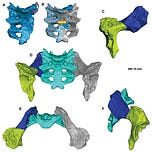


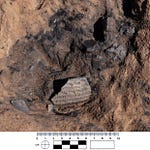
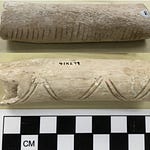
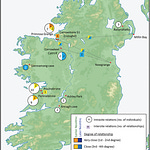

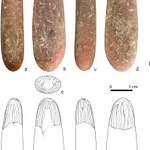

Share this post